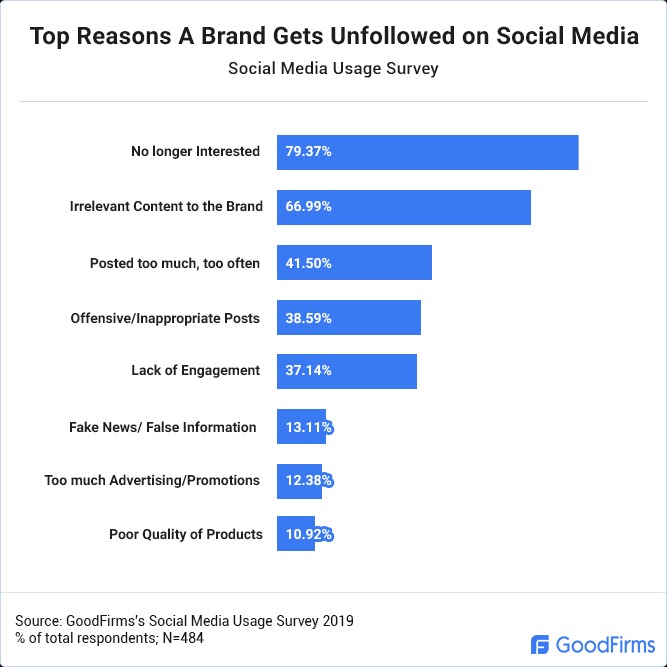


Online marketing can feel like the Wild West at times. It is constantly changing and there is no rulebook on how to actually be successful in your digital marketing attempts. If online marketing has you pulling your hair out - you aren’t alone. According to Content Marketing Institute, only 5% of B2C businesses feel their marketing efforts are effective.
We want to change that statistic. Here at Hiero we believe in empowering business by providing the tools needed to navigate online marketing. Interested in getting the experts involved? Connect with us to get started.
We see a lot of common mistakes with online marketing - here are 3 reasons why yours may not be effective:
“The algorithm doesn’t care what time I make posts, right? It’s all going online anyway so it doesn’t matter.”
While this assumption is common, it’s not correct.
When posting content, you should always be aware of the day and time. In fact, you should be planning your digital marketing around it. Just like most things in online marketing, the best days and times to publish content depends on a number of factors. For instance, you should not be posting on Facebook at the same time you are publishing a blog on your website. Different platforms have different times for optimal reach. We aren’t suggesting there is a single best time to post content, but there are factors to consider about what types of posts are made and when.
Social Media
After analyzing over 30,000 social media posts, Hootsuite determined the optimal times to publish for maximum engagement. Next time you make a post on your business page, keep this in mind:
The best time to post on social media overall is 10:00 AM on Tuesdays, Wednesdays and Thursdays.
In order to consistently take advantage of these times, you may want to consider the assistance of scheduling software. Services such as Hootsuite, Meta Business Suite, Adobe Express and Loomly are all great options to help manage your publishing schedule. You can also count on us at Hiero to take this task off your to-do list. We can write original content, design custom graphics, schedule and even boost your posts.
Blog Articles
Interestingly, the best time to post on social media is not the best time to post a blog article. This is because blogs and social posts are two different beasts. Reading a blog post usually requires more time and it also covers more in-depth topics. Additionally, subject matter affects the optimal time for blog publishing. However, in a study done by KISSmetrics, Dan Zarrella, Search Engine Land, and HubSpot, optimal post times were identified based on different goals:
Emails
Yes, even the time you send out your email newsletter is important. In fact, 86% of people say that having time to read an email is an important factor in determining whether they even open it (MailJet). Just like blogs, email newsletter peak read-times vary with the content. However, the best time to send out an email newsletter is mid-week, in the middle of the day (WordStream).
Filling your socials with spammy posts or overly-forced messaging just for the sake of getting your name out there will never do you any good. In fact, it will do the opposite. 50% of social media users will unfollow a brand that posts too much or too often (GoodFirms). Even on the best days, online marketing can feel like a chore. However, that is not a good excuse to start posting just for the sake of posting. Here are a few ways to avoid being that local Facebook page everyone hates:

Quality Over Quantity
Oftentimes, consistently creating content that doesn't feel repetitive can feel like a big challenge - and that's because it is! It can feel easier just to toss a ton of generic posts out in hopes that one of them sticks. Don’t fall into this trap. Take the time to create thoughtful content that has a purpose. Stop and ask yourself who are you writing the content for and how engaging will it be? 67% of users will unfollow an account that posts irrelevant content so it is vital to stay in-tune with your audience and put intent behind your posts (GoodFirms).
Don’t Be Vain
No one wants to follow a page that only self promotes. While self promotion can be a great tool to bring in new customers, it must be done tastefully to avoid negatively affecting your brand perception and social reach. 61% of users want brands to provide content that is interesting, entertaining or useful (Medium). According to survey data from Conductor, if the customer’s journey down the sales funnel begins with educational content, they are 131% more likely to buy. Connect with your audience - approach content like a partner, not a salesperson.
A good rule of thumb to avoid boasting about your brand too much is the 70/20/10 rule. Your content should be 70% informational, 20% local information or directly interacting with your audience and 10% sales/self promotion.
As established above, throwing a bunch of ideas out until one sticks is not going to get you very far. This is no different when it comes to determining your target audience. Trying to appeal to an audience that’s too broad will quickly dilute your message. You do not want to come off as a “jack of all trades, master of none” or you will quickly lose the trust of your audience. 51% of consumers believe brands send too much irrelevant content (Marketo). People become frustrated when they are targeted with misguided content. Not only can you lose them as future customers, but you also risk them broadcasting their annoyance to others.
Establishing Your Audience
If someone asks, “Who’s your target audience” and your response is something along the lines of “women” or “Millenials” - you need to delve deeper. Ranges like these are far too broad to effectively understand your audience. Really consider your ideal customer with questions, such as: Are they in a certain profession? Are they a parent to young children? Are they the primary purchaser in their household? What is their annual income?
Continue to define your audience until your description looks something like, “30 to 40-year-old working mothers who are the primary grocery purchasers in their households” - this is a target audience. Your definition should be specific enough to write targeted content towards and manageable enough to connect with. Your product or service is not for everyone. You are far better off taking the time to identify and connect with your niche audience than you are screaming into a crowd.
Guilty of one of the three things listed above? Don’t sweat it - they are all common mistakes. Nailing online marketing is not something you can do in a week. It is a massive commitment to undertake the journey to find your sweet spot. Keep at it and continue evolving your strategy. Don’t know where to start or need an extra hand? Reach out to us!